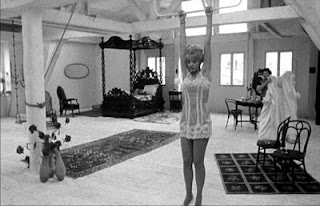 Hi, Screengrab readers! For my first post, I thought I’d kick off a series in which I suggest various movies worth recording off of cable TV in the upcoming week. See, I know that since you read the Screengrab, you have a fairly solid grasp on the movies and movie history, but there’s always some that slip through the cracks. The movies I’ll mention here will give you a chance to catch up on those that you might have overlooked. If I miss something, please post it in the comments!
Hi, Screengrab readers! For my first post, I thought I’d kick off a series in which I suggest various movies worth recording off of cable TV in the upcoming week. See, I know that since you read the Screengrab, you have a fairly solid grasp on the movies and movie history, but there’s always some that slip through the cracks. The movies I’ll mention here will give you a chance to catch up on those that you might have overlooked. If I miss something, please post it in the comments!
Here’s the skinny: I’m assuming, of course, that you’ve gone to the trouble of getting a DVR (or have a VCR you know how to set, at the very least) to go along with the cable you pay for month after month, but you don’t always keep an eye on upcoming movies. Since you’re reading the Screengrab, I’m not going to recommend movies that everyone recommends, such as Singin’ In The Rain (which, incidentally, I record just about every time it’s on, because I always have time to watch one of the dance numbers). I’m not going to be too esoteric, either. I’ll use an in-law test: I’ll stick with movies that I doubt my mother-in-law has seen, and that way will try to catch some of the great movies that are more likely to slip through the cracks. One more thing: no premium channels, mainly because I can’t afford them.
Mon, Oct. 6:
Nothing here. Good thing, too, since I’m not posting this until Tuesday Morning
Tues, Oct. 7:
9:00 am: Ace In The Hole on TCM. I don’t think this is a very good movie. But plenty of reviewers disagree with me, so I’m going to mention it. Actually, by the time this goes live, it'll probably be too late.
8:00 pm: Don’t Look Back on VH1CL (repeating at 11:30 pm). Maybe you’ve seen this, and maybe not. But it’s one of the great rock documentaries and, if you watch it, you’ll enjoy I’m Not There that much more.
Read More...